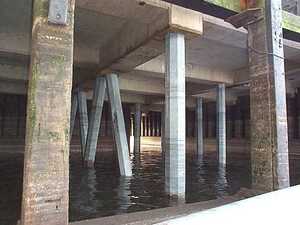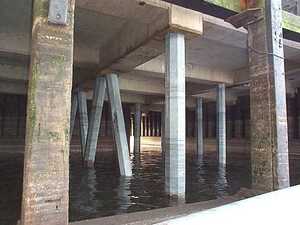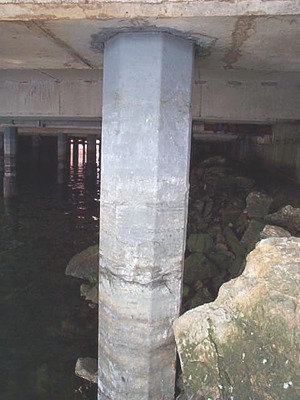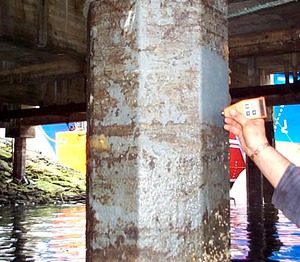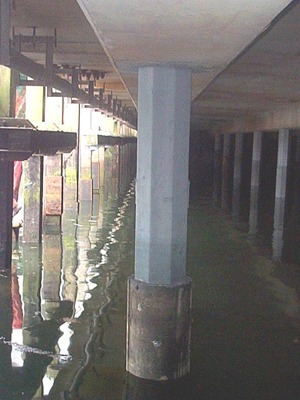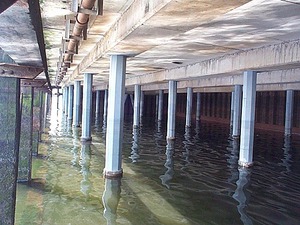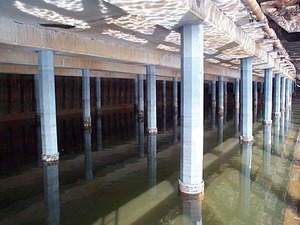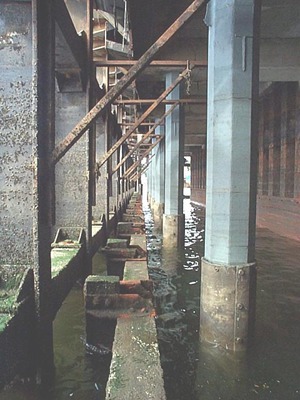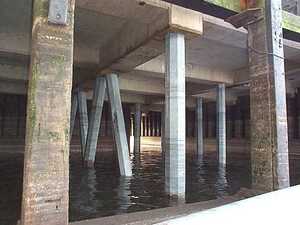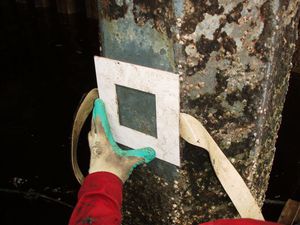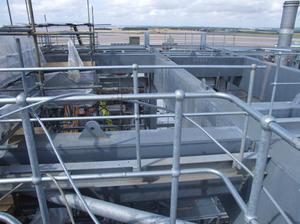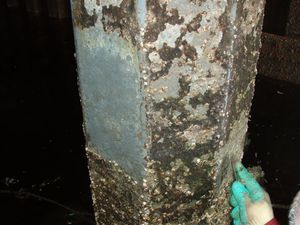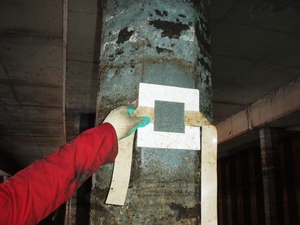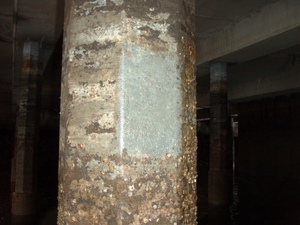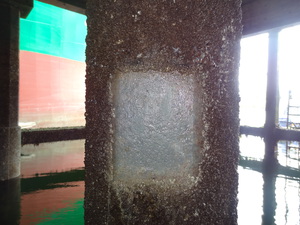Killybegs Immersed Pier Legs
Application of ZINGA on the pier legs at Killybegs Harbour
The application of ZINGA on the pier legs at Killybegs Harbour was done in the summer of 2000.
The customer, the Irish Department of Marine and Natural Resources, and the contractor, SAR Marine & General, waited a full year before giving any official comment on the performance of the ZINGA coating.
Based on regular controls, they confirmed that the ZINGA is performing very well.
These pictures of the pier legs were taken in August 2001: one year after the application.
The ZINGA is holding perfectly with no rust showing. Any marking on the legs is either seaweed or harbour contaminants.
The fishing pier, which supports the factory buildings, is held up by 309 mild
steel hexagonal shaped legs, all approx. 600 mm in diameter. These pier legs have been in the sea for 25 years and due to the salt and the sulphate reducing
bacteria present in the seawater, they were losing up to 2 mm per year of their thickness.
The waters around Killybegs are unique because they have the highest rate of corrosion in Europe.
The height from the concrete deck to the water level at low tide is approx. 3 to 4 meter. At high tide, 1.5 to 2 meter of each pile is totally submersed in seawater.
The piles were prepared by UHP water jetting and blasting to SA 2.5 with Rz 40 to 60 µm.
The application happened under severe surveillance of SGS, because it was a very
difficult and delicate application as they had to take into account the tidal movement of the water and the constant contact with sea water.
SGS had prescribed a dry film thickness of ZINGA of 25 + 40 + 40 + 40 µm = 145 µm, but in the end an average of 300 µm was measured.
An adhesion test by SGS , performed in August 2000 gave an average result of 3.5 N/mm², which is very good.
Below you will find an extract from the final inspection report, issued by SAR Marine & General for the Department of the Marine and Natural Resources, dated 15/06/2001, that describes the excellent condition of the piles 12 months after the application. In July 2003 SGS has done the first official inspection of the pier legs after 3 years of service.
There was no significant change in the layer thickness of the ZINGA. Some minor repair work had to be done on piles that had received an insufficient surface preparation at the time of the application on areas that were difficult to reach.
Extracts of this and other related inspection reports and pictures that were taken are available on request.
In July 2009, a third inspection took place , 9 years after the application and the results were very good.
ZINGA protects the steel of the pier piles very well, even in these very harsh conditions. In March 2014, 14 years after the original application , some pier legs were locally hydro blasted for making an inspection.
The shells & barnacles on the surface of the ZINGA layer had grown more than
100 mm in thickness on some places, but the ZINGA underneath was still in
perfect condition.
System: ZINGA 1 x 25 µm DFT + 3 x 40 µm DFT
Images in this category

